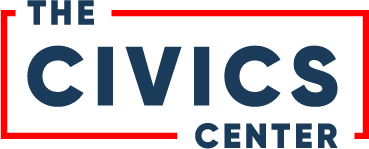New Report Explains How States Can Support Youth Participation and Strengthen Young Voter Turnout
A Silenced Generation: How the Power of the Youth Vote Collides with Barriers to Voting authored by Movement Advancement Project (MAP) and released in partnership with The Civics Center
Since ratification of the 26th Amendment in 1971, young people have had the right to vote, starting at age 18. More than five decades later, however, the 26th Amendment still has not lived up to its promise. Youth voter registration continues to lag far behind registration rates of older voters, suppressing overall youth turnout.
Congress has never enacted robust protections to enforce the 26th Amendment. Today, with a divided Congress and many Members opposed to expanded protections for voting rights, national solutions remain some distance away. State legislatures are key bodies to engage today in creating the policy foundation to strengthen democracy and to broaden youth electoral participation. They play a significant role in determining the time, place, and manner of elections.
As the 2024 election cycle ramps up, a new report from MAP, in partnership with the Civics Center, examines specific barriers that young voters face, what states can do to support young voters, and how each state’s election policies impact this important demographic.
I was delighted to provide a Forward for the report, and we’re thrilled to provide highlights below from Brian Hinkle, Senior Voting Policy Researcher at Movement Advancement Project (MAP). Everyone who cares about youth and democracy and the state level policies to support both, please read on.
For media inquiries about this report, please contact Rebecca Farmer.
A Silenced Generation: How the Power of the Youth Vote Collides with Barriers to Voting
Authored by Movement Advancement Project (MAP) and released in partnership with The Civics Center, this report creates a framework for evaluating states’ policy climate for youth voting. The report also details policy solutions to remove obstacles that impact youth voter turnout. Analysis in the report finds that nearly one in ten young voters live in a state with a low Youth Democracy Score. Included in the report is a foreword by Laura W. Brill, Executive Director of The Civics Center.
An estimated 53 million voters under 30 will be eligible to vote this year, including an estimated 8 million young people who have become newly eligible to vote since the 2022 midterm elections.
Youth Democracy Scores
MAP analyzed 11 key policies that particularly impact young voters to develop Youth Democracy Scores. This metric provides a look at the electoral landscape for young voters across the states, showing which states are providing robust youth voter environments and those that are not.
MAP’s Youth Democracy Score provides a look at the electoral landscape for young voters across the states, showing which states are providing robust youth voter environments and those that are not.
Nearly one in 10 young voters live in a state with low Youth Democracy Scores.
Young voters turn out at lower rates than older voters, but this can’t be attributed simply to apathy or generational differences. Young voters face additional barriers to participating in the democratic process.
Policy Recommendations
“Young voters are a formidable voting demographic,” said Brian Hinkle, MAP’s Senior Voting Policy Researcher, “and engaging them now is vital to creating a new generation of active, lifetime voters.”
The report includes a series of policy recommendations for how states can remove barriers and engage young voters. Lawmakers can take concrete steps to streamline voter registration and improve access to the ballot, including in the following areas:
Voter pre-registration: Twenty states and D.C. allow pre-registration at age 16, so long as the person will be 18 when they cast their vote. An additional four states allow pre-registration at age 17. Research shows that pre-registration results in higher voter turnout among young voters and is growing in popularity. From 2014 to 2020, the number of pre-registered young people more than doubled to nearly 1 million young voters.
Election Day voter registration: Allowing voters to register the same day that they cast their vote is a fail-safe, especially for young voters and others who move more frequently and may face challenges with registration as a result. Only 22 states allow voters to register on the same day they vote.
Voter ID and allowing student IDs: Most states ask voters to show some form of ID to vote. However, young people are less likely to have a driver's license, the most common form of ID, and may only have a student ID. Nine states explicitly do not allow a student ID to be used for voting, including several states with the most restrictive photo ID laws. Restrictive photo ID laws are particularly harmful to young people of color.
Vote by mail: In 36 states, voters can request an absentee ballot without having to provide a reason. This makes voter participation easier for young voters, among other voters who may not be able to make it to a polling place. In states with the most restrictive mail voting policies, youth turnout is as much as 15 percentage points lower.
Early voting availability: Young voters often work unpredictable schedules at hourly jobs where they may be forced to choose between wages and voting. Early voting increases the opportunities to vote, and youth voters are among the populations who benefit. In 2022, more than half of young voters cast their ballots before Election Day. While most states offer some form of in-person early voting, the length of availability varies widely.
In this important election year, there is still significant work to be done. Only through a collective effort can young voters be supported and encouraged and in turn build a healthier democracy in the future.
📒Read more in the full report: bit.ly/map-youth-voting


